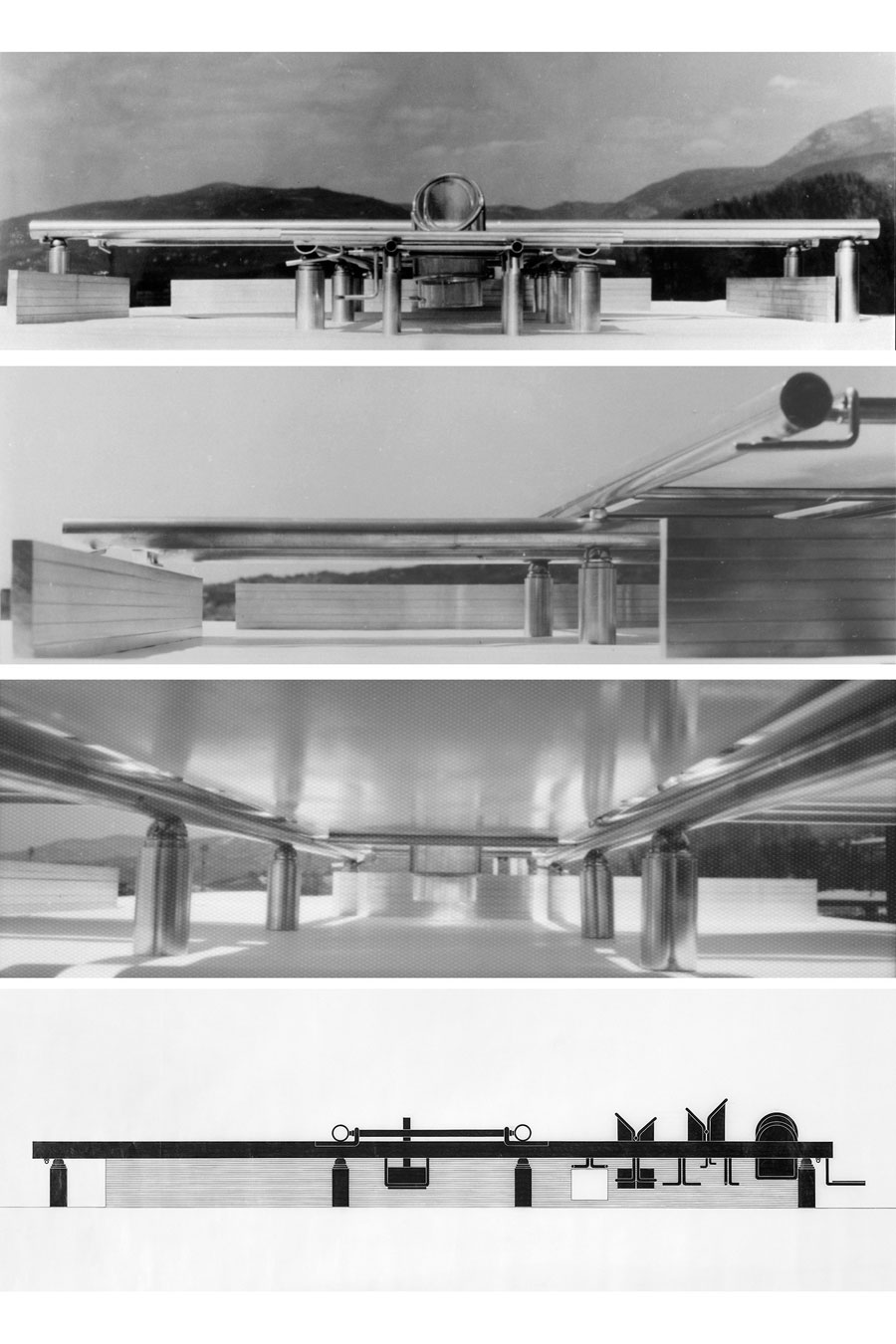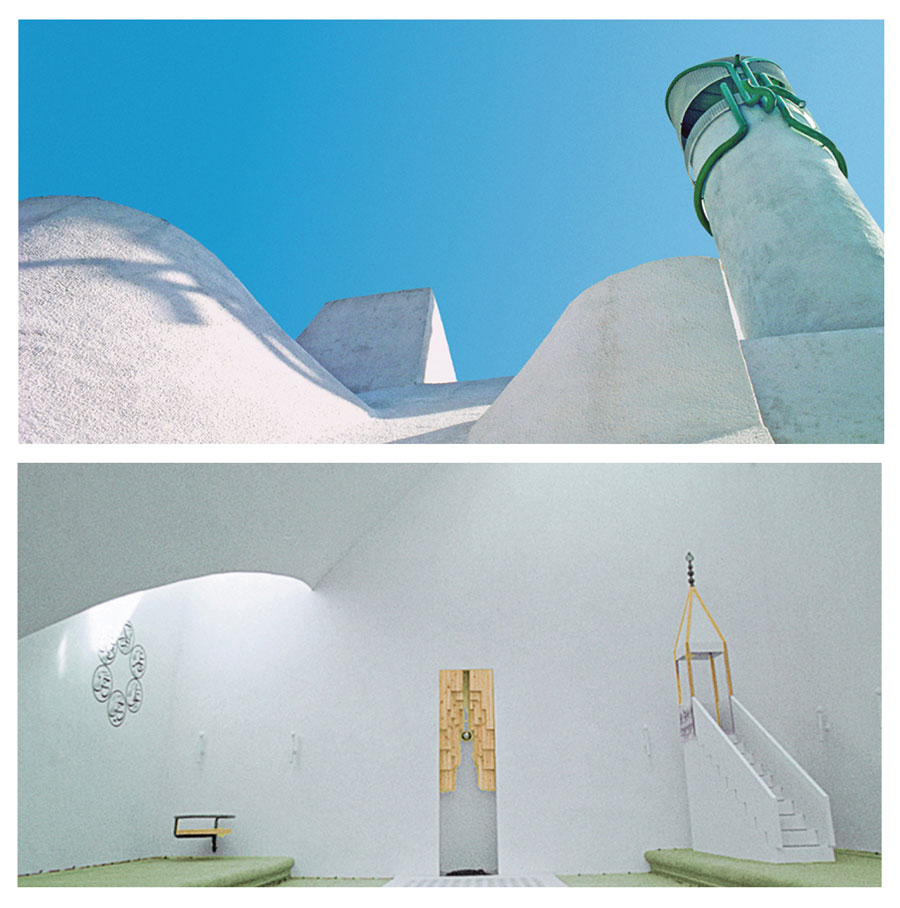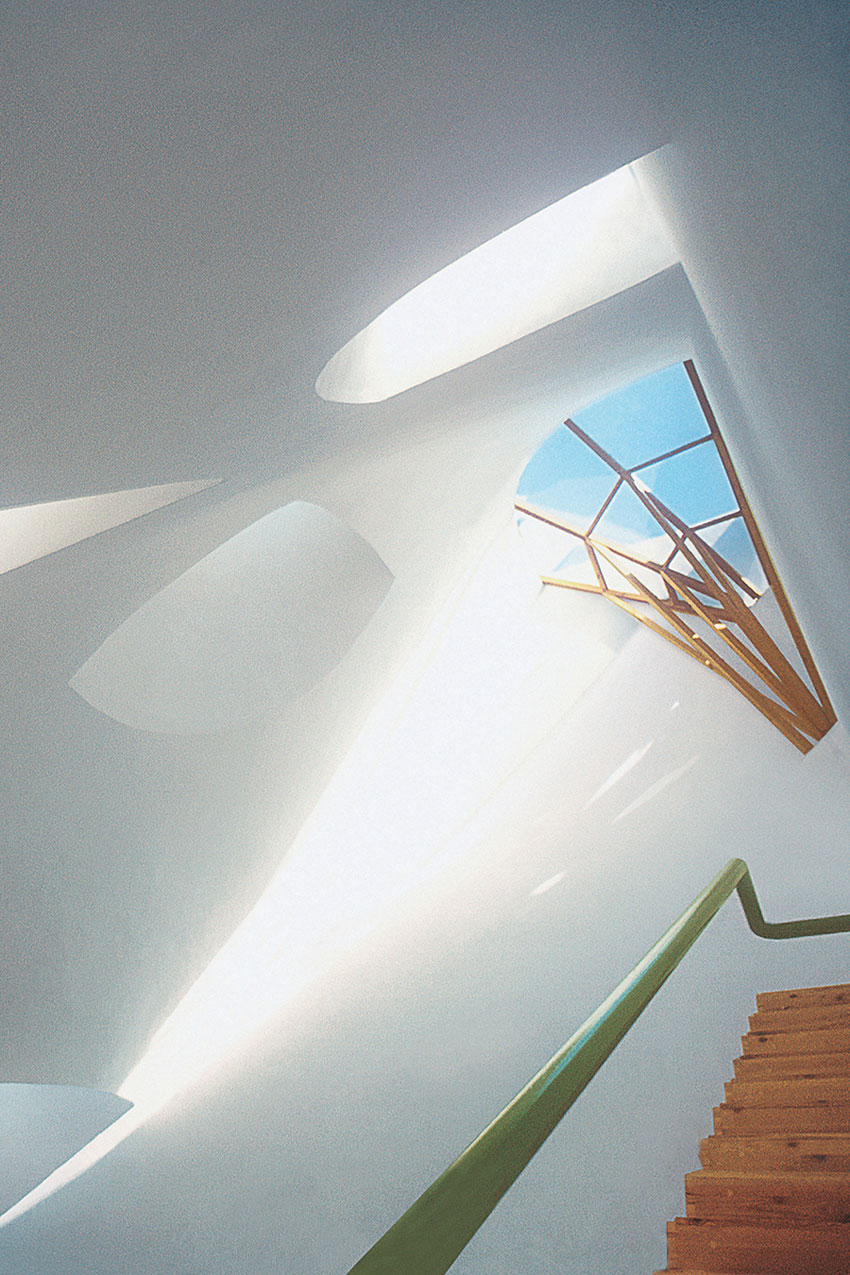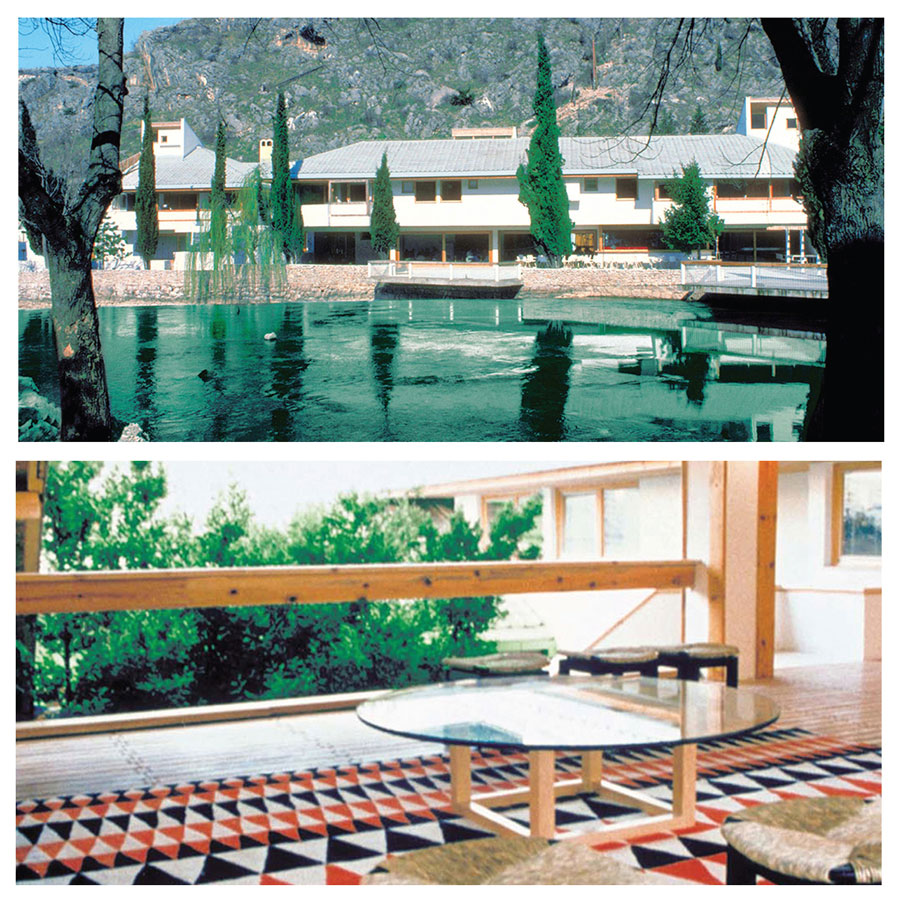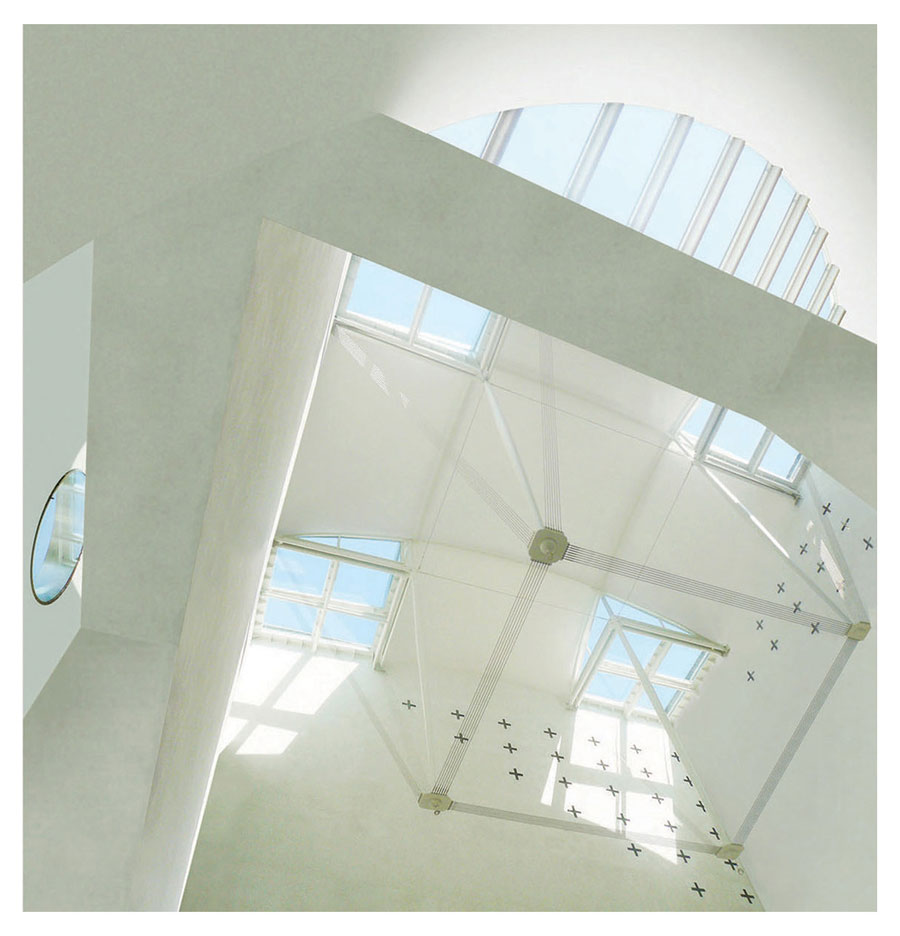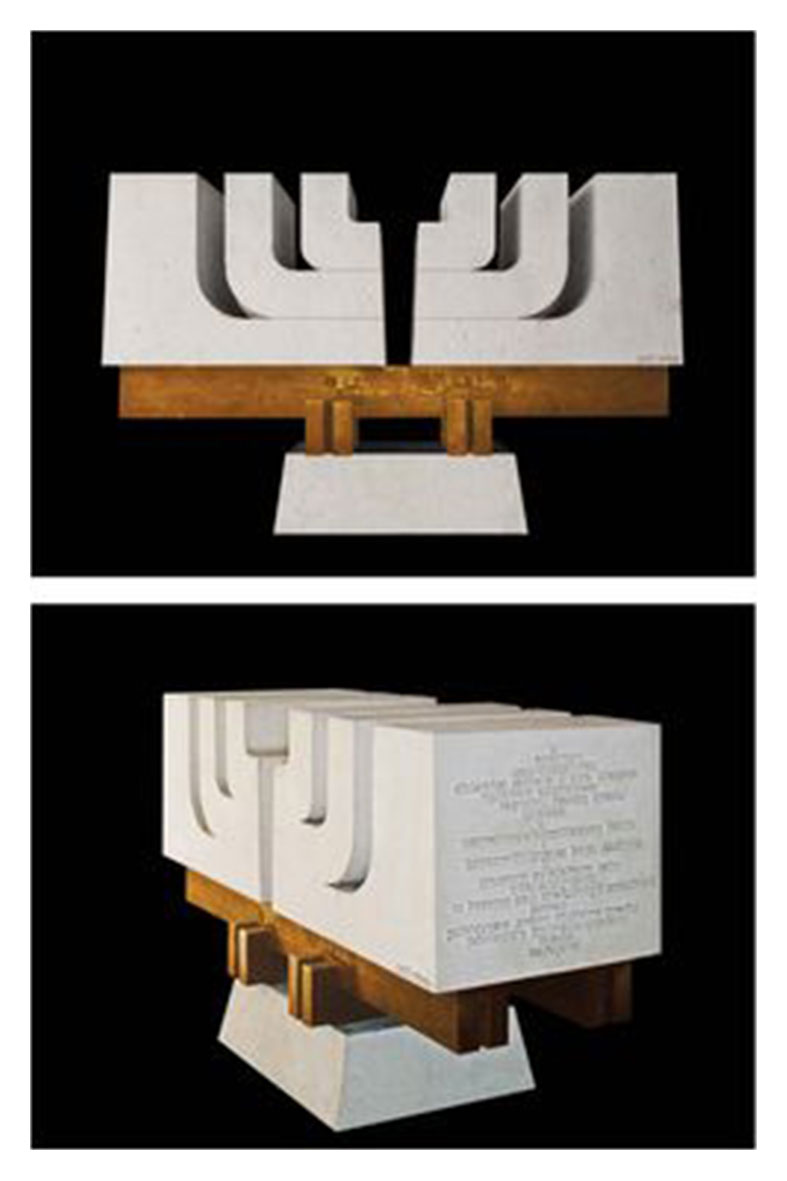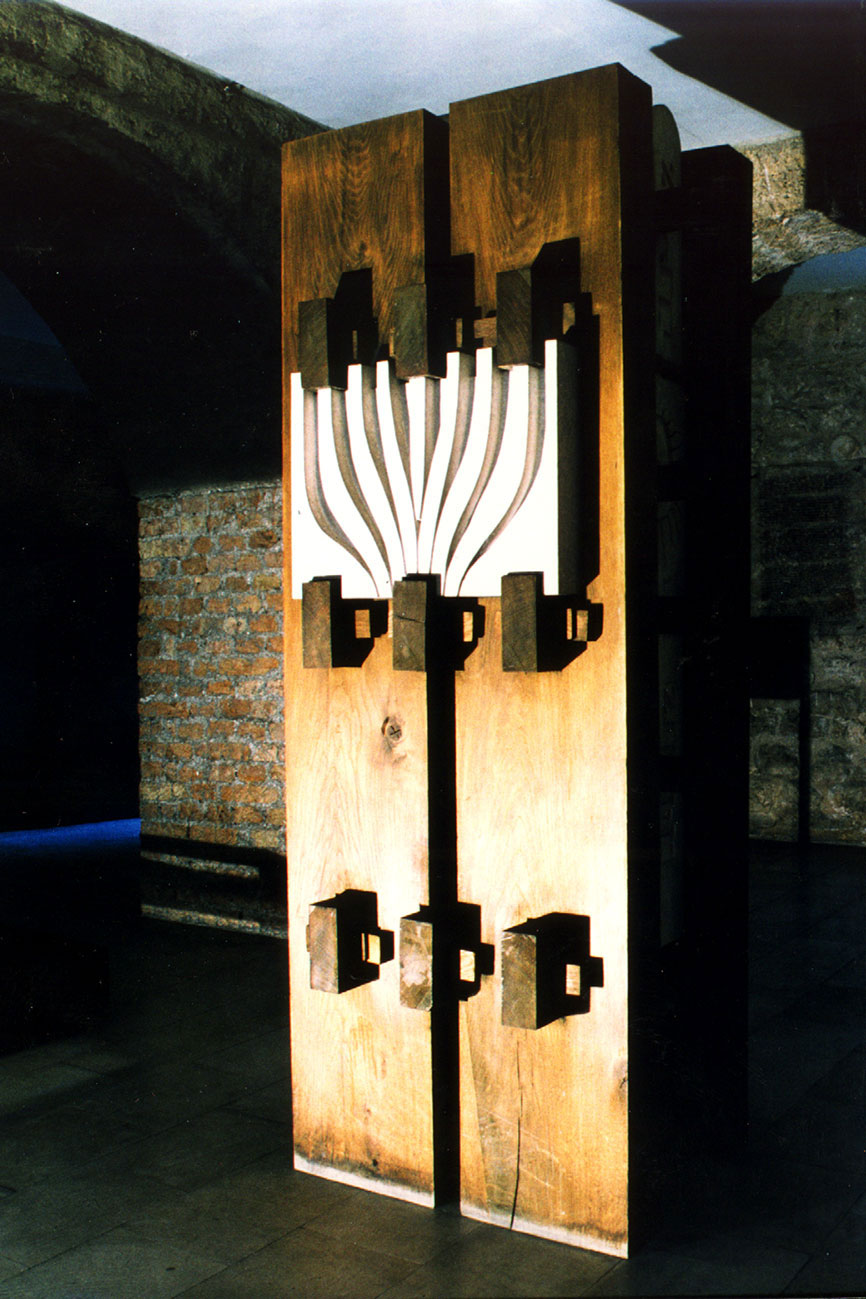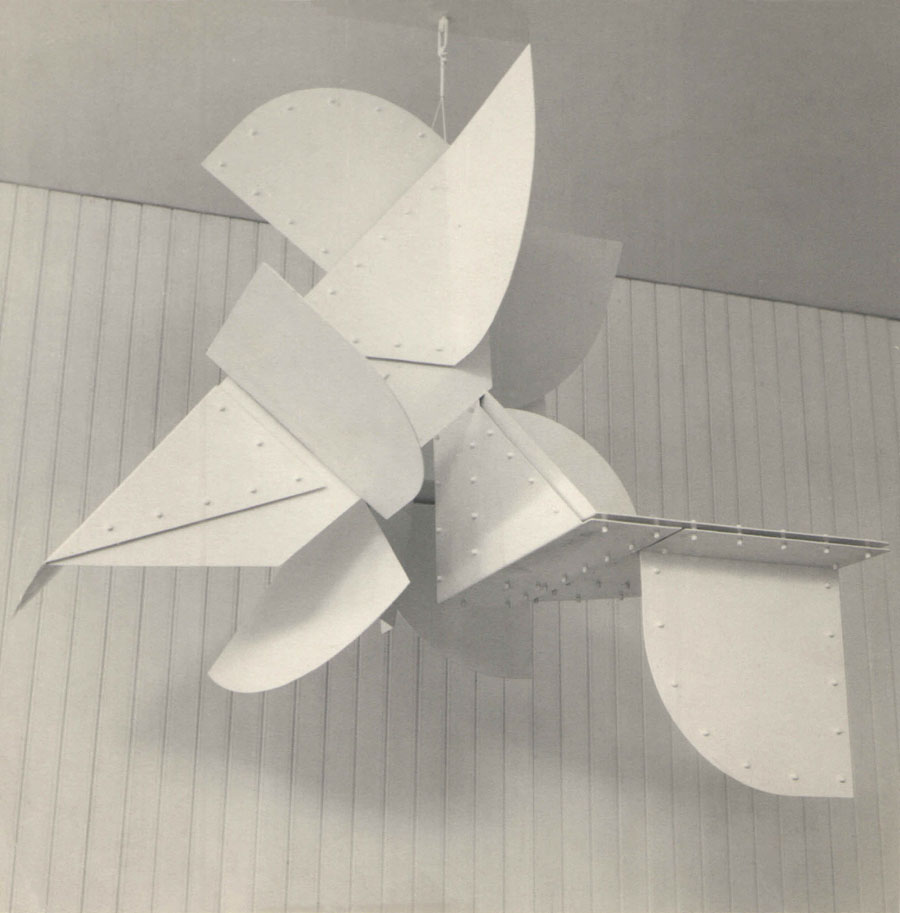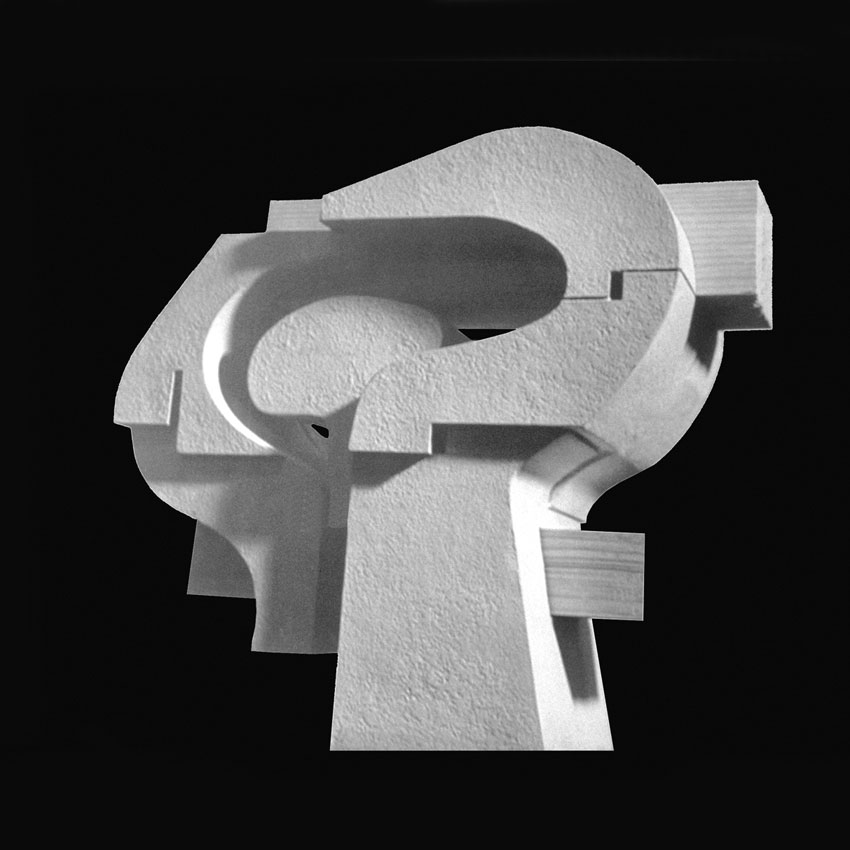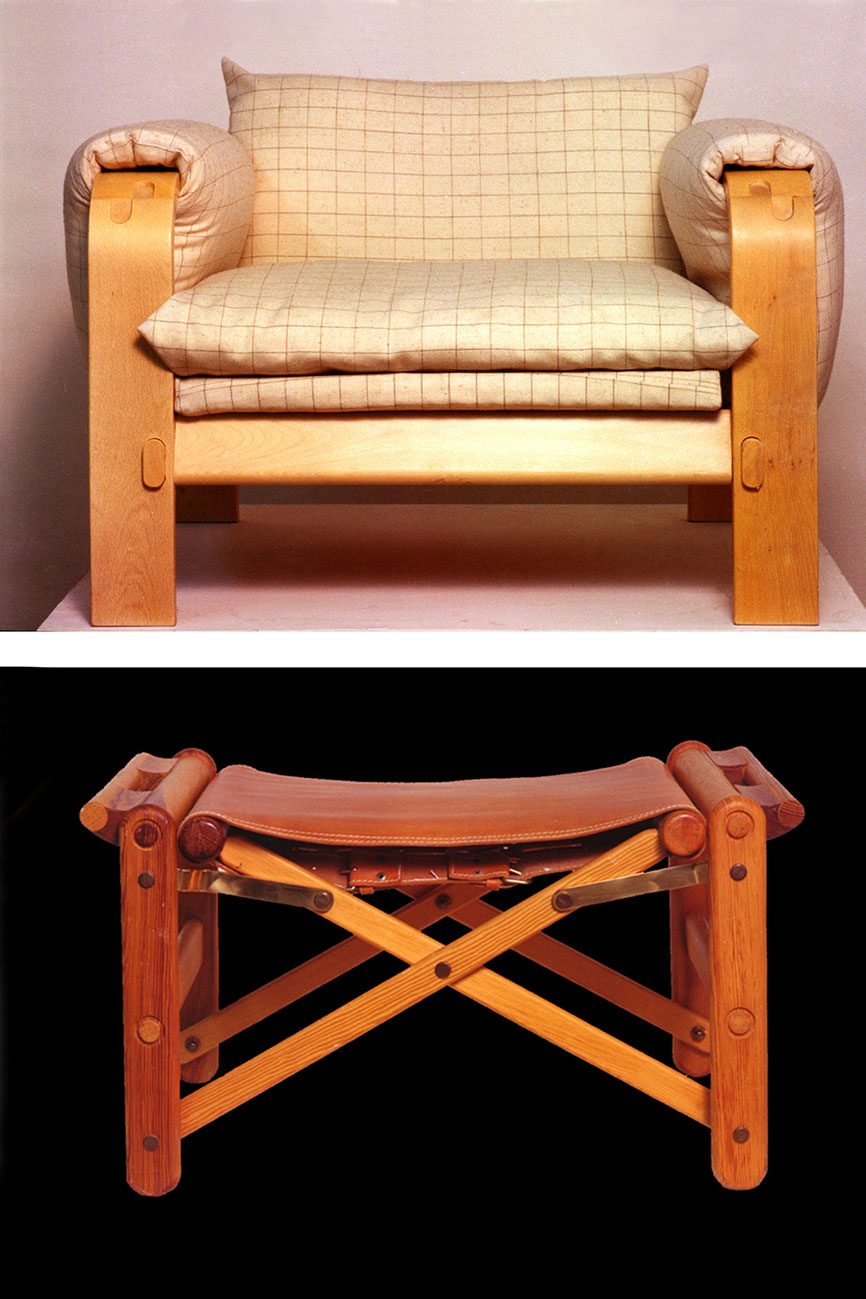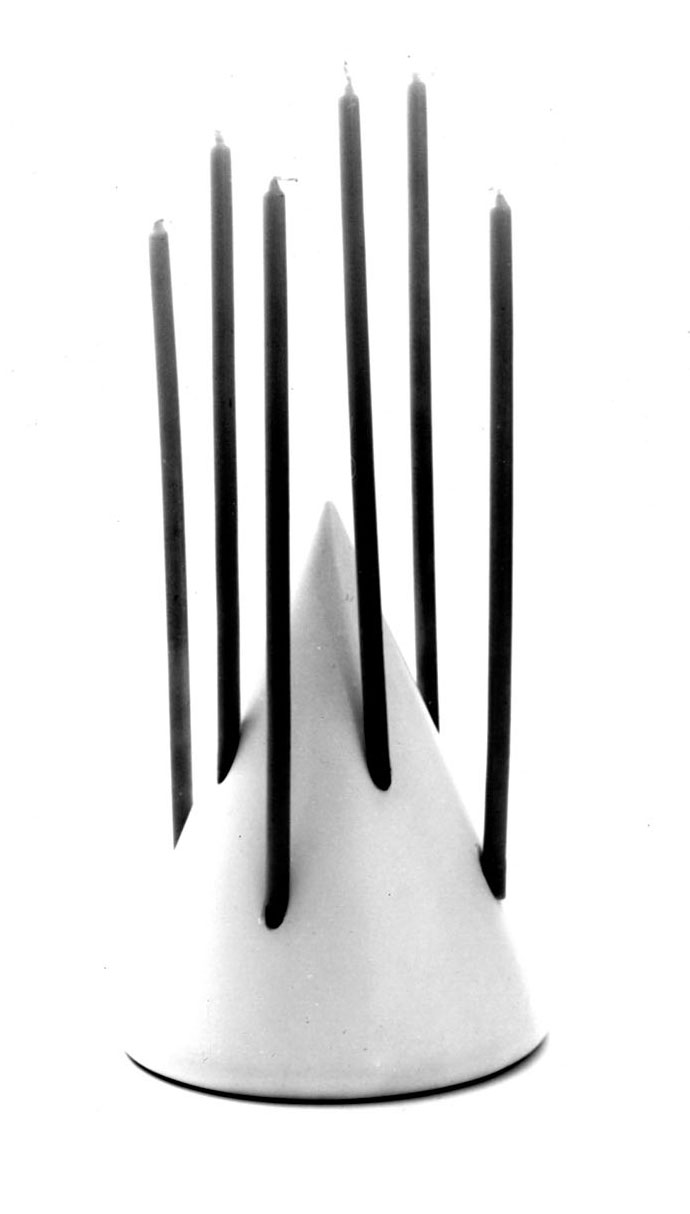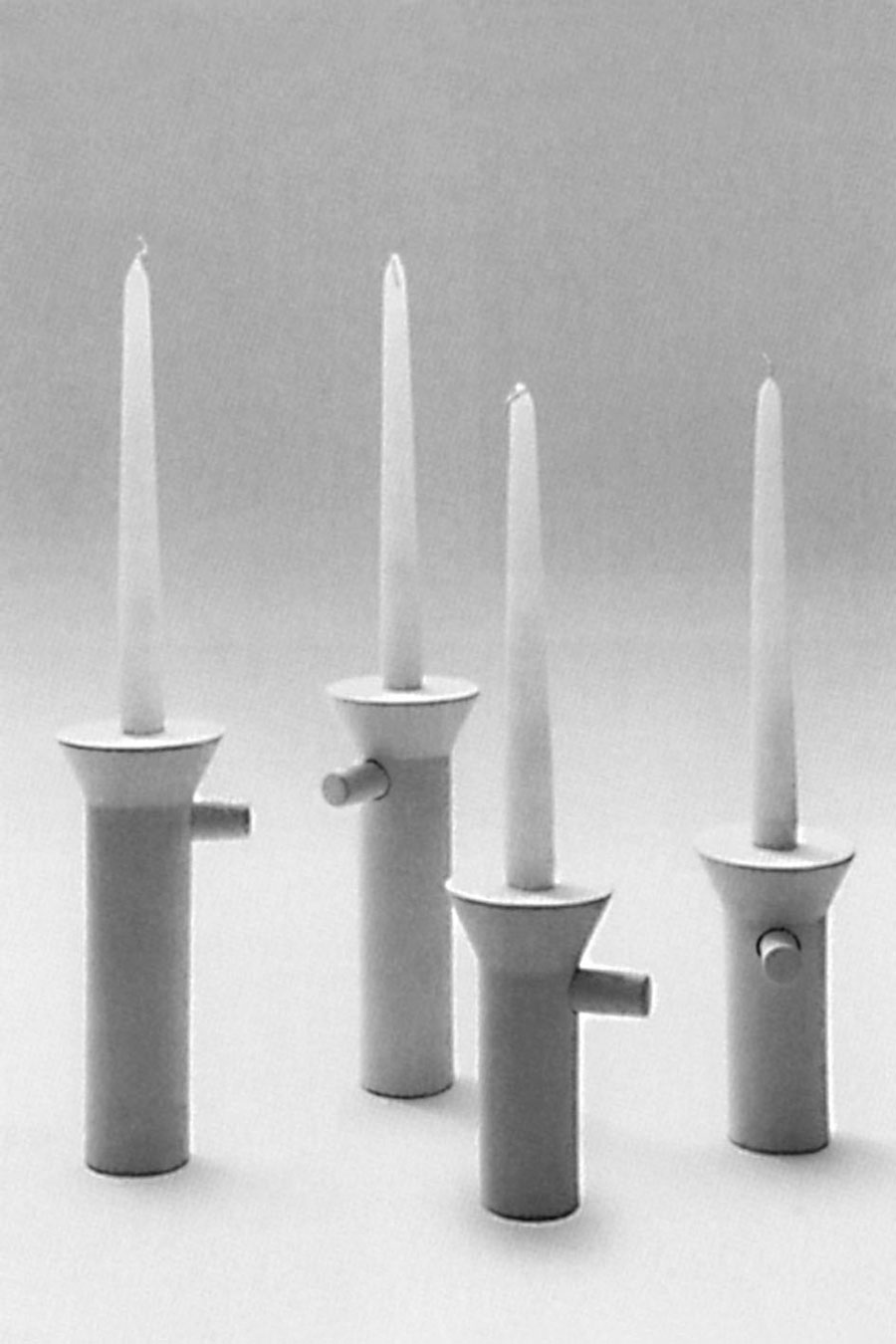Zlatko UGLJEN
(Mostar 1929)
Zlatko Ugljen is one of the most important architects in Bosnia and Herzegovina in modern times. He was a professor at the Faculty of Architecture in Sarajevo for many years. He is one of the founders and professors of the Product Design Department at the Academy of Fine Arts in Sarajevo. He is a full member of the Academy of Sciences and Arts of Bosnia and Herzegovina and a associate member of the Croatian Academy of Sciences and Arts as well as the Slovenian Academy of Sciences and Arts. He has won numerous awards for architecture, among which the Yugoslav Borba Award for Architecture and the International Aga Khan Architecture Award 1983.
In his architectural practice he implemented total design ideas.
He designed more than 200 buildings, most notably those designed and constructed as total design: National Theatre Zenica (co-authored with J. Finci), 1974; Hotel Visoko in Visoko, 1974; Hotel Ruža in Mostar, 1975; Hotel Bregava in Stolac, 1975; BiH Executive Council residence in Tjentište, 1978; Šerefuddin – White Mosque in Visoko, 1979; SFRY President’s residence “Gorica” in Bugojno, 1979; Planinski hotel Vučko on Mt. Jahorina, 1983; Hotel Kalin in Bugojno, 1983; Memorial School and Surgery in Prusac, 1999; Behrambeg’s Madrasa Mosque in Tuzla,1999; Retired Clergy Residence in Mostar, 2004; Plehan Religious and Cultural Centre in Plehan, 2005; St. Paul’s Church and Franciscan Monastery in Tuzla, 2006; Chapel of the Mostar Bishopric, 2006; St. Mark’s Church in Plehan, 2008; Catholic Church of Our Lady of the Angels, Nova Bila, 2009; Central Building of the Islamic Community in BiH, under construction; housing and business centre of Turali-beg’s Waqf in Tuzla, under construction; Church of St. Francis of Assisi in Žeravac, under construction; Vjeko Božo Jarak Gallery – Podkosa, Dubrava 2009; St. Clara’s Chapel in Svilaj, 2009; Catholic Chapel in Plehan, 2010.
Group exhibitions: 1971 – Challenge: 20 Yugoslav Architects, Zagreb (Croatia); 1985 – Contemporary Yugoslav Architecture, New York (SAD), Jakarta (Indonesia), Beijing, Shanghai (China); 1992-1993 – Sacral Architecture Biennial: Architecture and sacral spaces in modernity, Venice (Italy); Munich, Berlin (Germany), London (UK); 1995 – Architecture for a Changing World, several cities in Asia, Africa and Europe; 1996-1999 – Architects of the BiH Academy, Sarajevo (BiH), Zagreb (Croatia), Maribor (Slovenia); 2006 – Architectural space and prayer, Pecs (Hungary); 2009 – Oris – idea (architectural drawings), across Europe; Balkanology – New Architecture and Urban Phenomena in Southeast Europe, Basel (Germany), Vienna (Austria); 2012 – Kubus oder Kuppel, Berlin, Germany; Mosque, Mosques, Stuttgart (Germany); Das Gemeinsame das es nicht mehr gibt, Vienna (Austria); Nedokon~ane modernizacije med utopijo in pragmatizmom / Unfinished Modernization Between Utopia and Pragmatism, UGM Maribor (Slovenia), Zadar (Croatia), Belgrade (Serbia), Ljubljana (Slovenia).
Bogdan Bogdanović
Vienna, 30 April 2003
Esteemed and dear colleague Ugljen, I know that, in our craft, it is very rarely the case that drawings and spatial forms find themselves in congruence with the writing and the written, i.e. in a full stylistic harmony, and in your case it is something more complex than harmony. It is the unity of meanings, no matter whether associations point to Arabica, or ancient Hebrew alphabet, or else, going the other way around, to the freshness of some systemic scriptures in statu nascendi… This also is a kind of a method, thus I have started attempting equalise your constructive nods in wood of concrete with various versions of ”the wooden”, of the Runic alphabet… Doing it, I very much enjoyed a new reading of the architectural forms-scripts, a reading that skips the conditionality of function and rushes to the spheres of apparently accidentally chosen associative combinations. If I brought into this surrealistic game some more brazenness than it is permitted by modern or post-modern theories– mea culpa.
Vjenceslav Richter
Zagreb, 21 April 1971
About the concept design for the Art Pavilion in Sarajevo proposed by the architect, Ugljen
"The proposed project in two variants is one of the most consequential and the most original works that have appeared in the world recently. Its orientation towards the language of a contemporary industrial aesthetics is particularly positive. With its design values based on the application of elements of roller, i.e. pipe, this structure will be at the same time a first-rate exhibit, and, as the newly created ambiance, it will influence the art life of Sarajevo. The ground pan disposition is persuasive, while the scheme convincingly articulates the fact that this structure will respond to multiple needs of the community. The permeation between the interior and exterior spaces, and their direct relation to the existing flora / dialogue with the logs of Canadian poplars, offer a possibility to take in the quality of these spaces."
Petar Krečić, Ugljen’s Spaces
"Delo" Ljubljana:
"Ugljen has succeeded to bring together grand gesture and a reasonable ground plan and the exterior, to introduce a great measure into the interior spaces commensurable with the man. Furthermore, a question arises whether, when Ugljen is concerned, is it primarily an exceptional person, exceptional talent, or is there a role played by tradition, i.e. the tradition of old, oriental Bosnian house that was so precisely described and appreciated by Dušan Grabrijan, and the tradition of moden architecture? It is both. However, while his architecture bears a hint of a very distant life of traditional Bosnian architecture, to which we must include his way of use of wood and wooden panels, the tradition of modern architecture that follows the footsteps of Juraj Neidhardt – Ivan Štraus is much more accentuated.
Moreover, it is on this basis that Ugljen has succeeded to invent a convincing Bauhaus-constructivist paraphrase with his exceptional hotel in Stolac (1967). This is a conceptual achievement that, at least in terms of a concept, has no precedent in Yugoslavia. On the other hand, he craftily and bravely uses convoluted wall, which is also an approach that can rarely be found among Yugoslav architects, so he superbly creates programmatically modern to such a specific architecture as a mosque (Visoko, 1971). A group of shortened or pyramidal forms joined into an architectural complex is still a very frequent motive in the Yugoslav architecture, but we can claim that, alongside Ugljen, we can hardly find someone equally successful in solving a task that is set in such a way.“


